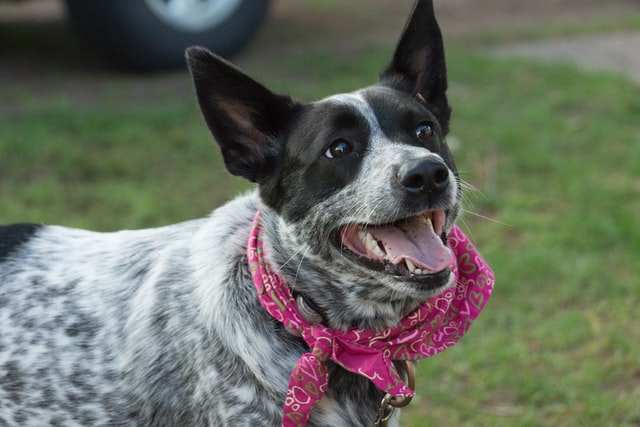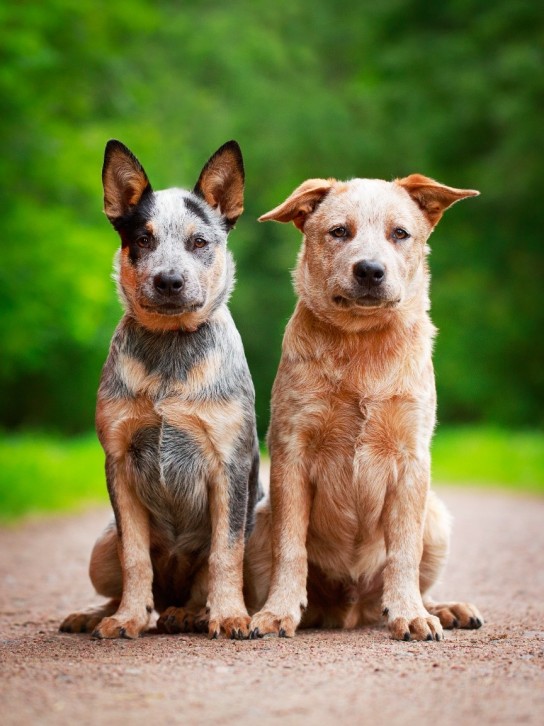
Australian Cattle Dog
Posted: 02/14/2023 | BY: Content Writer
Australian Cattle Dog Breed Profile
Pet Profile
Perfect for high-energy families
- Medium (43-50cms)
- Typically weighing between 13kg and 23kg
- 12 to 15 years life expectancy
Intelligent, loyal and energetic, the Australian Cattle dog, often called Aussies, make great companions and are fiercely protective of their families.
Australian Cattle Dogs are working dogs, originally bred to herd cattle back in the 19th century. Modern Australian Cattle Dogs are still as energetic and intelligent as their ancestors, needing lots of space, exercise, and stimulation to keep them happy.
If you adopt an Australian Cattle Dog, consider pet insurance to protect your pet from health conditions, accidents, and to ensure the best care throughout their life.

History of Australian Cattle Dog
The Australian Cattle dog breed originates from the outback where English settlers bred their herding dogs with Australian wild dingoes in the 1800s.
The settlers needed a dog capable of rounding up cattle across the rough Australian landscape, and a cattle dog with a personality fit for a family. The result was the Australian Cattle Dog.
The Australian Cattle dog breed is an all-around athlete but needs plenty of exercise to be truly happy. They have been known to herd children as well as livestock!
Characteristics of Australian Cattle Dog
These dogs bond closely with their families but their wariness of strangers can make them very protective.
Their herding instincts and tendency to bite the heels of cattle can make them difficult to keep with small animals and children, but if you raise them together your dog should see them as just another member of the pack.
Australian Cattle Dogs are better-suited for rural homes with lots of open lands to explore rather than city apartments. Cattle dogs are intelligent dogs that generally respond well to training.
Australian Cattle Dogs are extremely loyal to their owners. With obedience training, they can be an ideal dog to keep as a family pet or as working dogs.
The breed standard of Australian Cattle has white fur with colored markings in various colors making their markings known as blue heelers, Queensland heelers, and red heelers.
Adopting An Australian Cattle Dog From A Rescue Or Breeder
Australian Cattle Dogs is a herding dog, similar to a Border Collie dog breed. There are many breed-specific Australian Cattle Dog rescue and rehoming programs. Unfortunately, this herding group can be known to bite or nip, causing them to get rehomed.
Australian Cattle Dog and Blue Heelers, Red Heelers, and Queensland Heelers can often be found in shelters.
When adopting a certified American Kennel Club-bred dog, the dog breeder will have certified papers with a lineage of the dog’s bloodline.
Exercise And Nutrition of Australian Cattle Dog
Australian Cattle Dogs are very active and easily bored, so must be given plenty of physical and mental exercise to keep them happy. At least 2 hours of physical exercise is required every day for a cattle dog breed, ideally in a wide-open space where they can run off that energy.
Cattle dogs can become destructive if kept in a small space or not exercised enough, and some owners mistake their boredom and frustration for naughtiness.
It is just the breed’s tendency to be an active pup. This particular dog breed requires an active lifestyle.
As a high-energy breed, Australian Cattle Dogs need a diet rich in protein and fat. Look for high-quality dog food with plenty of nutrients to support their joints.
How much you feed your Australian cattle dog will depend on their size, age, and activity; if you’re uncertain then ask your veterinarian for advice.
Common Health Problems And Illnesses of Australian Cattle Dogs
Australian Cattle Dogs are incredibly robust dogs, bred for weathering the tough Outback terrain. However, they still have their share of hereditary conditions and a tendency to hide their pain which means problems can go undiagnosed for longer.
For that reason, it’s important that your dog is regularly checked over by a vet to ensure they’re not hiding any serious health issues.
These annual vet exams can be covered by pet insurance plans and can include coverage for routine testing and care.
It’s recommended that you insure your Australian Cattle Dog as a puppy to ensure that they’re covered for any problems that arise in later life. Find out more about why it’s important to insure puppies here.
Australian Cattle Dogs are more prone to inherit deafness, and often litters of puppies are tested for the condition.
Deaf puppies can be difficult to sell and cannot be used for breeding, and so unfortunately many end up in dog shelters despite making excellent pets.
This is a common problem in medium and large dogs and may require corrective surgery to put things right. The condition means that your canine’s thigh bone doesn’t fit into the hip joint properly, and it can be painful for your furry friend.
A condition that causes blood flow to bypass the liver and other abdominal organs, it prevents the organs from growing and doesn’t give the liver a chance to remove toxins from the body. This can be a birth defect in some dogs or can develop in later life.
Causing a gradual deterioration of the retina, PRA diseases eventually lead to blindness in cattle dogs. The condition is hereditary and unpreventable but thankfully isn’t painful for your Australian Cattle Dog.
Your vet may recommend antioxidants to slow deterioration and help keep the vision of your cattle dog for longer.
Fun Facts About Australian Cattle Dogs
- An Australian Cattle Dog held the Guinness World Record as the oldest dog to ever live. Bluey was born in 1910 and was sadly put to sleep at 29 years and 5 months old.
- Australian Cattle Dogs are born white. Red or Blue hairs will grow as they get older to give them their distinct coloring.
- Australian Cattle Dog are also known as Blue Heeler, Red Heeler, or Queensland Heeler because of their knack for nipping at the heels of cattle to get them moving.
- It’s thought that these cattle dogs played a big part in the expansion of the Australian Beef industry.
- Australian Cattle dogs are one of the top 8 most likely to be found in a dog shelter, possibly because owners underestimate just how much exercise these dogs need.
